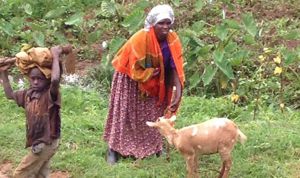Tangible help not temporary hope
Community Health Promoters Training
In Uganda, the ‘core’ of the Health system is the Community Health Promoters (CHPs) programme. CHPs are trained to Levels 1, 2 and 3 - each of which is nationally-approved, bearing increased responsibility and having enhanced qualifications and authority to administer advice, treatment and drugs. Level 3 Promoters provide a bridge between a Clinic and the Level 2 CHPs, working in both the Clinic and the community, while the other two levels are entirely community-based, delivering their services and advice in the homes of the population.
CHPs at Levels 2 and 3 cannot be trained ab initio; they need to progress from Level 1 to Level 2 and thence to Level 3. A period of at least 12 months needs to elapse between one level of training and the next, during which the CHP must be engaged in the community and must undergo Continuing Professional Development (CPD). Each Level’s training course is circa 9 months long, featuring periods of classroom training followed by periods of training consolidation in the Community.
In 2016 Evergreen held the first CHP Level 1 Course ever to be held in the Budwale area. 70 trainees embarked on the course and a very creditable 64 CHPs graduated. In the final few months of 2016, these CHPs commenced work in the community, advising on basic health and hygiene. They provide their community with effective and practical methods to counteract malnutrition and they are able to recognise, give first-aid for, and refer malaria, water-borne diseases and other major conditions. Level 1 CHPs also guide on the implementation of a clean water chain and advise on sexual health matters and alcohol/substance abuse. The average family in Uganda has six children, and these qualified CHPs are encouraged to share their knowledge with their extended family and immediate neighbours. Even assuming an average of just ten households (a very low estimate) for each CHP to share with would mean an approximate positive impact on six hundred and forty households, roughly 5000 people!Projects

Our Trustees have dictated that absolutely no less than 90%, and ideally no less than 92%, of funds must be spent on our charitable projects
